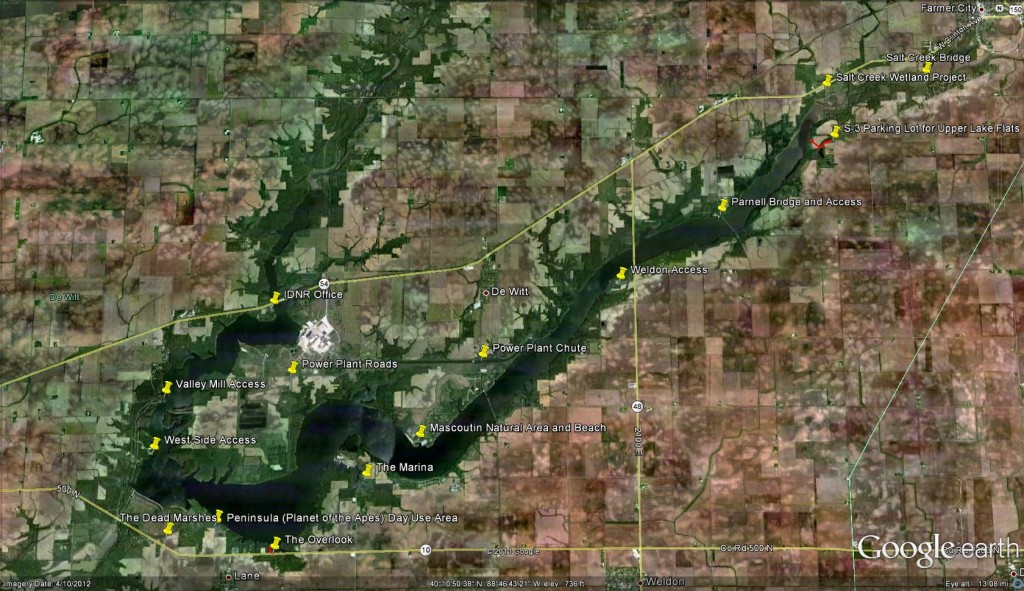The 126th Street Marsh is a mitigation wetland created in 2004 along Indian Creek north of Hyde Lake Wetland in southeast Chicago. A wide variety of waterbirds clearly benefit from the various habitat improvements, which include graded banks and native plantings along Indian Creek.
The entrance to the 126th Street Marsh is located on the north side of 126th Place, three-tenths mile east of Torrence Avenue in Chicago. Enter the parking lot at 2924 E. 126th Place. This business has had several owners over the years (most recently JCIM). In past years, No Trespassing signage has been posted here, and birders have sometimes been asked to leave the premises by security. As of this writing (April, 2013) no such signage is posted, and the business appears to be up for lease. Should No Trespassing signage be posted again in the future, it is important that birders respect the intentions of the property owners.
After entering the parking lot, simply follow Indian Creek north, birding from your car. This area can be excellent for waterfowl, shorebirds, herons, and other wading birds in season. Indian Creek continues north for about four-tenths mile, at which point it empties into the Calumet River. The Calumet River is another habitat hot-spot (excellent for gulls and waterfowl during the winter months).
Canada Geese are regular along Indian Creek, but several Snow Geese were also seen there in February/March, 2013. Cackling Goose is possible at the Calumet River, and 3 White-winged Scoters were also seen there in March of 2013. A pair of Mute Swans nested at Indian Creek near the parking lot entrance in 2005 & 2006.
A Snowy Egret was seen at the Indian Creek wetlands on several occasions in August, 2006. Little Blue Herons (up to three) are far more frequent at Indian Creek – Little Blues have been seen with some regularity during the warmer months (late April – mid-August) from 2005 – 2013.
Interesting raptors are also seen in this area. Ospreys (Calumet area nesters) are occasionally seen flying overhead during the warmer months, and an immature Red-shouldered Hawk frequented the trees on the south side of 126th Place in January/February of 2013. The Calumet area Bald Eagle pair is occasionally seen flying overhead or foraging at the 126th St. Marsh. Peregrine Falcons nest with some regularity at the Ford Bridges over the Calumet River to the west, and they occasionally occur as flyovers. A Merlin showed up at Indian Creek in August of 2006.
Migrant shorebirds may be found along Indian Creek in late spring & late summer during low-water years (at least 13 species since 2004), including 2-3 White-rumped Sandpipers during late May/early June of 2005 & 2012. Semipalmated Sandpipers & Dunlins are among the more expected shorebird species found here in late May.
During the coldest part of the winter, the Calumet River (viewed from the north end of the marsh) frequently becomes iced-over. This ice is soon broken by barges passing through, creating perfect habitat for the larger wintering gulls. Hundreds of Herring & Ring-billed Gulls regularly occur, but small numbers of Thayer’s, Iceland, Lesser Black-backed, Glaucous, & Great Black-backed Gulls are also expected during any given winter.
Dickcissels may be heard singing from grassy areas near the parking lot entrance in June during drier years, and a male Orchard Oriole held a territory at the same location in 2013.
